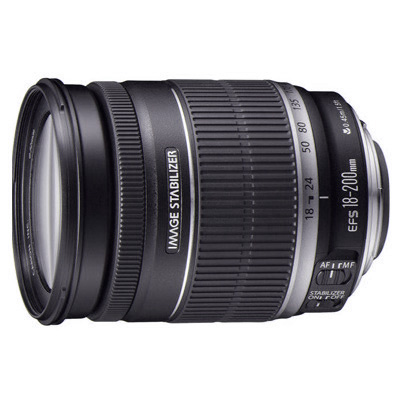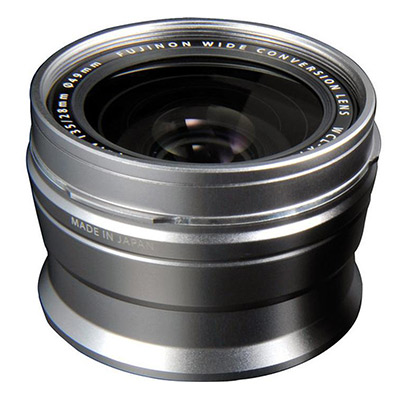What is a Lens?
There is a slew of state-of-the-art lenses available in the market for every camera, including Canon camera lenses, Nikon camera lenses, Sigma camera lenses, Tamron camera lenses, and many more. Each camera manufacturer uses their own lens style and lens mounting technology. For this reason, it's important to buy lenses intended for your camera brand. For instance, Canon lenses are best suited for Canon cameras, while Nikon lenses generally work best with Nikon cameras. Some companies, like Sigma and Tamron, do make lenses for all of the major brands. When buying from a company that makes lenses for multiple brands, make sure you are buying the correct version of the lens for your camera.
Whether it is a digital camera or film camera, camera lenses can be separated into three categories: standard camera lenses, wide-angle camera lenses, and telephoto camera lenses. It is important to choose the right kind of camera lens depending on the type of pictures you would want to shoot.
Lens Types

Standard Lens
Standard Lens
Standard camera lenses offer you a view similar to the human eye. This type of camera lens is best suited for normal, daily picture shooting, such as clicking snapshots, taking pictures while traveling, individual photos or party shots for your cherished memories.
Wide-Angle Lens:
A wide-angle camera lens provides you a wide viewing angle for a huge, sweeping perspective. It also provides a more advanced depth of field and reproduction, as opposed to a standard camera lens. Wide-angle lenses are favorably suited for shooting in large areas that demand a panoramic view, such as capturing images of landscapes, natural beauty, outdoor environments, sprawling edifices or a huge group of people. Since you get a better depth of field with a wide-angle lens, it is better suited for pictures having a strong foreground. This type of lens is equally adept at shooting indoor scenes and close-up photos.
Telephoto Lens:
When shooting scenes that require a narrow point-of-view, a telephoto lens should be chosen. It effortlessly narrows down the image to be shot, thus making it easy to capture the subject from far off distances. Its long-distance shooting properties make it ideal for capturing sports events, wild animals in their natural habitat, and distant landscapes.
Features of a Lens
While looking for camera lenses, it is essential that you look for certain important features and technicalities before arriving at a final decision.
Focal Length
This is arguably the most important feature that should be considered while buying a lens. It suggests the viewing angle of a lens. The smaller the focal length, the wider the viewing angle. Zoom lenses are indicated with a range of focal lengths, such as a 18-55 mm range. On the other hand, non-zoom lenses, better known as prime lenses, have a fixed focal length - such as 50 mm.
Aperture
The second-most important feature of a lens is its aperture. The aperture of a lens indicates just how much light it lets in. This feature is denoted in various ways, such as F4, f/4, 1:4, which all signify the same thing. The lesser the aperture, the greater the amount of light a lens is capable of gathering. For example, a lens with an aperture of F2.8 gathers double the amount of light than that of a lens with an aperture of F4. Lenses equipped with a higher aperture enable you to capture images in lower light or even indoors without the need for a flash. Higher apertures also reduce the depth of field, thus enhancing the sharpness of the image behind and in front of the focus point.
Image Stabilization
Different brands offer diverse kinds of image stabilization for their lenses. Pentax and Olympus feature image stabilization within the body of the lens itself, while Canon, Fujifilm, Nikon, Panasonic and Samsung use certain techniques that are in-built inside the lens. Sony, on the other hand has a more complex method. It employs interior 'Super Steady Shots' for its Alpha SLRs, and 'Optical Steady Shots' for its NEX system cameras. Image stabilization becomes all the more crucial while shooting with telephoto lenses, as it stifles any blurring effects in case your camera shakes. Different companies denote the image stabilization in their lenses by various abbreviations. Below is the complete list of image stabilization abbreviations for the leading lens manufactures:
 Canon - Image Stabilization (IS)
Canon - Image Stabilization (IS)
 Fujifilm, Panasonic and Samsung - Optical Image Stabilization (OIS)
Fujifilm, Panasonic and Samsung - Optical Image Stabilization (OIS)
 Nikon - Vibration Reduction (VR)
Nikon - Vibration Reduction (VR)
 Sony (NEX system) - Optical Steady Shot (OSS)
Sony (NEX system) - Optical Steady Shot (OSS)
 Sigma - Optical Stabilization (OS)
Sigma - Optical Stabilization (OS)
 Tamron - Vibration Control (VC)
Tamron - Vibration Control (VC)
Format Coverage:
APS-C sensors are used in SLRs and other cameras without mirrors. Most leading lens brands, excluding Olympus and Panasonic, manufacture a wide variety of lenses that are ideally optimized for APS-C cameras. This offers the best shooting scenario for regular photo capturing as well as wide-angle zooming. Full frame lenses also go well with APS-C cameras, but APS-C lenses don't merge well with full-frame cameras. Stated below are the APS-C formats for SLR lenses by different labels:
- Canon - EF-S
- Nikon - DX
- Pentax - DA
- Sony - DT
- Sigma - DC
- Tamron - Di II
- Tokina - DX
- Sigma - DN
- Tamron - Di III
Lens Mounts:
Manufacturers use their own signature lens mounts, making it difficult to interchange lenses with diverse brands. The latest kind of interchangeable lens compacts provide a wide range of compatibility with their respective SLR mounts through contemporary lens adapters. However, this can decrease the camera's efficiency to a small degree, especially the camera's auto-focus which might become a bit sluggish.
Auto-focus
A lens's auto-focus greatly influences its performance. The noise and speed of a lens can either be increased or decreased depending on the quality of auto-focus. The focus meter is found either on the body of the camera itself or on the lens. Just like in other features, different lens manufacturers have their own names along with corresponding abbreviations for their auto-focus meters, as listed below:
- Canon - Ultrasonic Motor (USM)
- Nikon - Silent Wave Motor (AF-S)
- Olympus - Supersonic Wave Drive (SWD)
- Pentax - Supersonic Drive Motor (SDM)
- Sigma - Hypersonic Motor (HSM)
- Sony - Supersonic Wave Motor (SSM)
- Tamron - Ultrasonic Silent Drive (USD) and Piezo Drive (PZD) - ring-type and micro-type respectively
- Tokina - Silent Drive Module (SD-M)
Build quality and Weather-sealing
The greater the cost of a lens, the more durable is its build. The kit lenses included along with the cameras are not that sturdy and are usually made from plastic. Spending a bit more gets you a more robust quality lens. Such lenses sport environmental seals that are resistant to dust and water. There is no denying that these kind of lenses put a dent in your wallet, however, there are companies such as Pentax and Olympus, which offer weather-sealed lenses at reasonable prices. Pentax also offers weather-sealed lenses in its kit along with its high-end K5 series DSLR camera.
Utilities of a Lens
Various type of camera lenses ascertain that you are always fully equipped while shooting for any kind of scenario. Whether you are capturing still photos or recording videos, these lenses guarantee that you achieve crystal clear image quality even in the harshest of climates or low light conditions. No matter if you are a professional or amateur photographer, it is important that you equip your bag with multiple high-end and innovative lenses.
Top 5 Lens Manufacturers
There are a number of companies producing lenses that are equipped with many useful features. Among them, let’s take a look at the best five lens manufactures operating currently:
Canon DSLR lenses unquestionably win the race with their advanced features and technological expertise. Most Canon camera lenses have amazing quality and speed. The beauty is that most of these lenses are not that steeply-priced. However, the top-end Canon lenses could be a tad heavy on your wallet.
Offering the closest competition to Canon in terms of features and technology are the Nikon camera lenses. When it comes to Canon vs Nikon lenses, there’s only a fine line that separates the two in matters of quality.
Those who want reasonably good quality lenses without spending too much could opt for any of the ground-breaking Zeiss lenses. Without compromising on performance and features, Zeiss lenses are not too expensive and ensure that you stay up-to-date with the ever-changing world of professional photography.
The next best lenses available in the market belong to the Olympus brand. They have a durable built, can operate efficiently in diverse environmental conditions, and even function smoothly in low light scenarios.
The most innovative feature of Sigma lenses is that they are compatible across a wide variety of camera brands. They are manufactured especially to work well with the demands of diverse camera manufacturers.
Terminology
It is important that you are well-versed with some essential terms before purchasing a lens. Let’s look at some of these important terms and what they mean:
- Focal Length:
- This term deals with the lens's viewing angle and helps you understand if the lens belongs to the prime or zoom variety.
- Aperture:
- This specification concerns the amount of light a lens is able to gather.
- Image Stabilization:
- The image stabilization of a lens becomes important for long-distance shots and narrow viewing angles. It generally features along with telephoto lenses and helps in reducing image blur when a camera shakes.
- Format Coverage:
- Format Coverage features along with APS-C lenses and is ideal for both, standard photo capturing and wide-angle zooming.
- Lens Mounts:
- Different lens mounts help in augmenting the performance of your SLR cameras. However, care needs to be taken to only attach those lens mounts that are compatible with the camera.
- Auto-focus:
- Depending on its quality, this feature vastly impacts the efficiency of a lens or a camera by reducing noise and expediting speed while shooting.
- Build quality and Weather-sealing:
- It is always more prudent to invest a decent amount in high quality lenses that do not come with the camera kit. Such lenses are sturdily built, last for a longer duration, and deliver reliable performances in diverse situations.







